Editor’s Note: Robin North is a member of LTV’s sponsored content team, The Leisure Explorers. Do you own a Leisure Travel Van and enjoy writing? Learn more about joining the team.
We are east-coasters, and although we currently live just outside of Atlanta, Georgia, we are originally from the Jersey Shore. My husband, Jim, and I grew up in Atlantic Highlands, just across the bay from Manhattan. We could see the skyline in the distance, but our little town was a world away from the big city. So, when planning a trip to Maine, we decided to make a couple of stops along the Jersey Shore to visit the familiar places of our younger days.
Our route took us through Baltimore, where we visited my brother and told him our plans to head over to Cape May and then work our way up the coast. At my brother’s suggestion, we drove to Lewes, Delaware, to catch the ferry to Cape May, rather than drive the circuitous route on land. We had never tried a ferry with the RV so this seemed a good opportunity to get the RV on the water. The ferry terminal was about a two-hour drive from his home, and we passed through small towns and farmland. After spending a week in the city, the rural landscape was quite welcome.
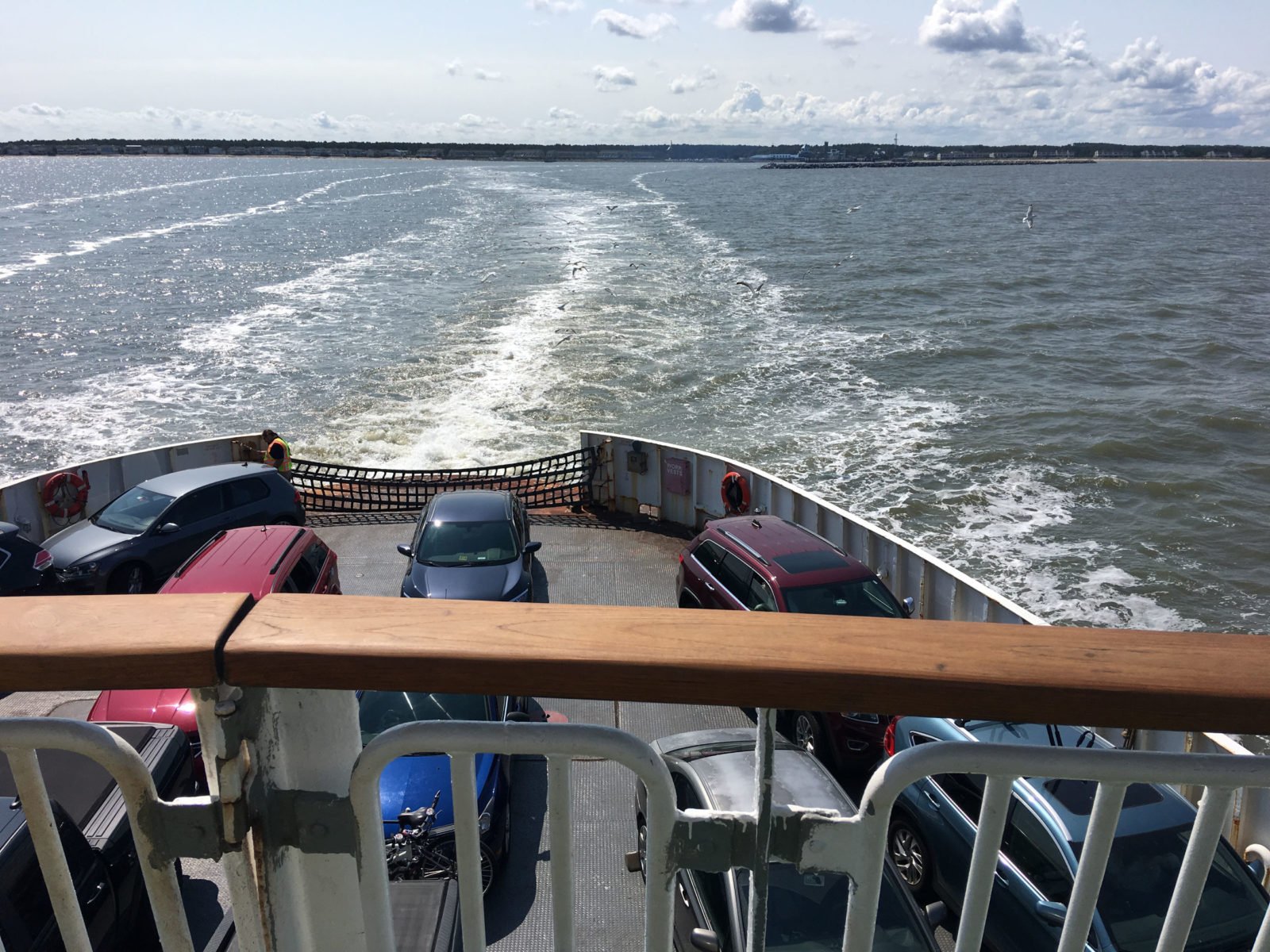
At the ferry terminal, we checked in and parked the RV in the line for boarding. The ferry can accommodate almost any vehicle that travels the highway system, so the RV was well within the height and weight limits. It wasn’t long before a port attendant guided us on board the ferry, parking us behind a larger RV. Locking up the unit, we headed to the observation decks.
The sun was shining and the breeze was cool as we stood at the rail and watched the Delaware coastline grow small behind us. The ferry took about an hour and a half to cross the Delaware Bay to Cape May. As we drove off the ferry and into the Cape May terminal, we charted our course to the RV resort. We had a two-day visit planned and there was a lot to see, so, rather than set up camp right away, we decided to simply check-in and then get out to explore the area.
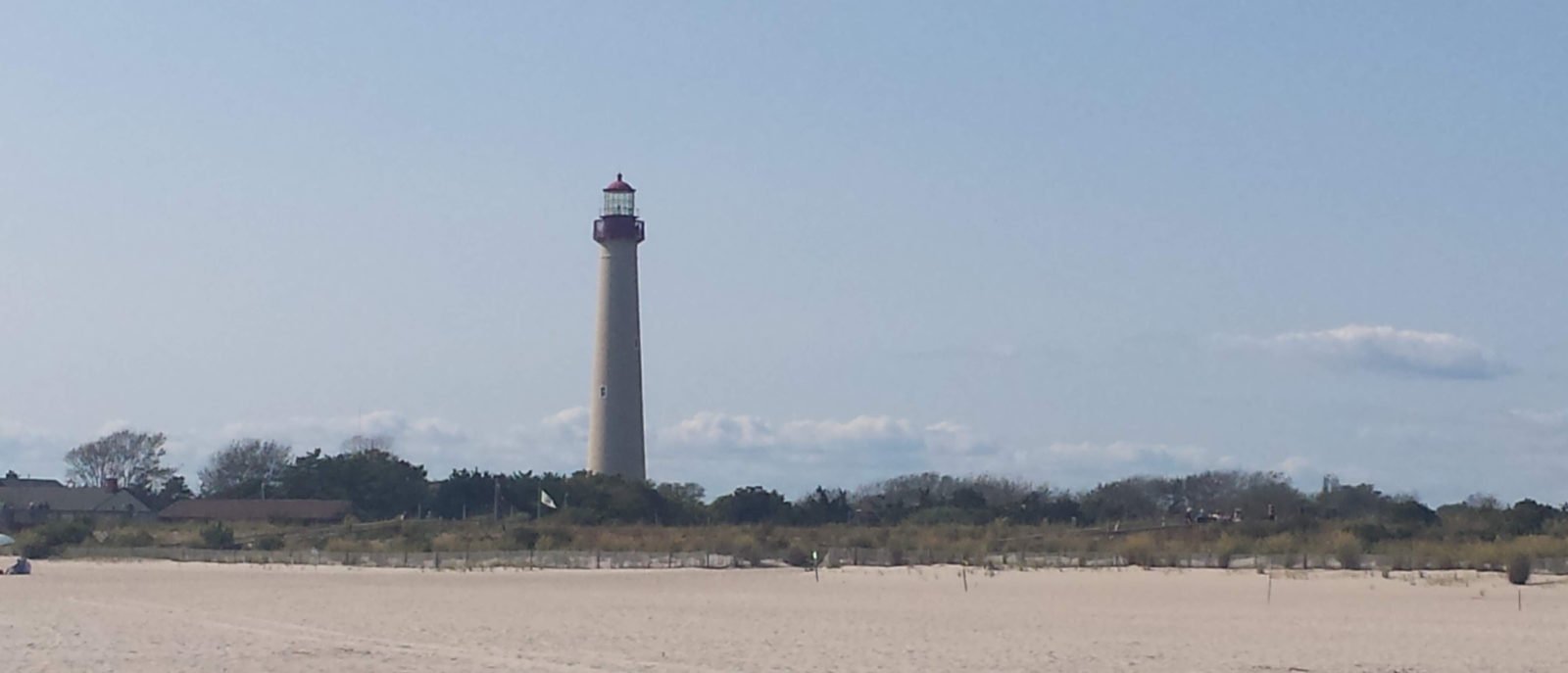
Our first stop was the Cape May Lighthouse. We had seen it from the ferry and decided to get a closer look. Signs pointed us to the very end of the Cape to the state park, where we found a wide expanse of beach along with the lighthouse, nature center, museum, and bird-watching platforms. After a walk around the outside of the lighthouse (the inside was closed that day) and a stroll through the museum, we walked over the dunes to the beach. The first thing we noticed was a massive concrete structure half-buried in the sand. Though it was large, we couldn’t quite make out what it might be.
Jim spotted a historic marker standing about ten feet away and within view of the structure. It explained that the structure was the remains of a World War II bunker. Massive, eroding, concrete walls and a sprawling footprint gave it a haunted look. Graffiti marred its walls, but it was impressive nonetheless. At one time, it stood in the water on pilings, but time and tides have captured it in sand. The placard mentioned that there was a twin building on the opposite shore in Lewes, Delaware. The two bunkers offered protection to the shipping channel during the war.
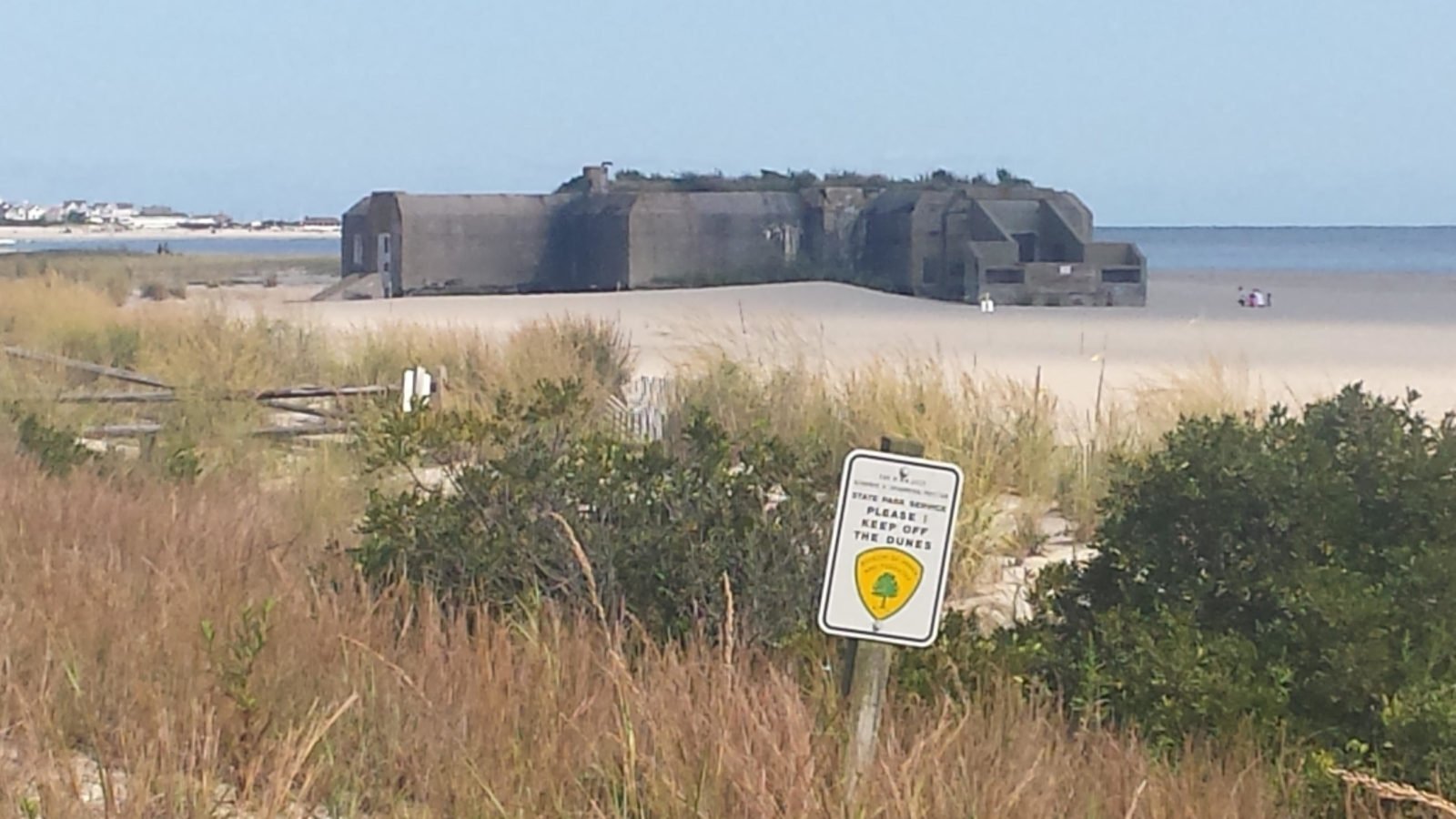
Our Cape May campground, Seashore Campsites and RV Resort, was amazingly clean and well-kept. White gravel carpeted the campsites, and each was outfitted with a fire pit, picnic table, cable, and full utility hookups – a real plus! The spots behind us emptied out through the evening and, by morning, we found ourselves the only RV in the entire row of campsites.
Day two brought more lovely weather and a trip into historic downtown Cape May. The quaint Victorian homes and cozy streets made walking around a visual delight. We parked the RV a few blocks away from the ocean, in the historic district. We strolled to the beachfront and up and down the narrow side streets, admiring all the neatly painted Victorian homes. We found a small burger joint overlooking the beach and had a quick lunch before setting off to find Cape May Winery.

We didn’t expect to find a winery here in Cape May (I don’t remember New Jersey being known for wine!), but we were pleasantly surprised as we drove up to the attractive main building and its surrounding vineyards. There were two barns in back of the main building, used for harvesting and wine production. The property was beautifully landscaped and provided multiple opportunities for interesting photos. The tasting room offered a choice of 5 wines from their catalog and the host encouraged us to take our selections anywhere in the vineyard.
There were tables scattered around several patios near the vines, as well as a rooftop deck and a veranda with colorful umbrellas. We chose a table overlooking the vineyard, near a stack of old wine barrels. There are 70 acres here, with the oldest vines in Cape May County. Their specialty is the viniferous grapes, including cabernet sauvignon, pinot grigio, and chardonnay, among others. But the afternoon shadows were growing and our energy was fading, so we headed back to camp for dinner.
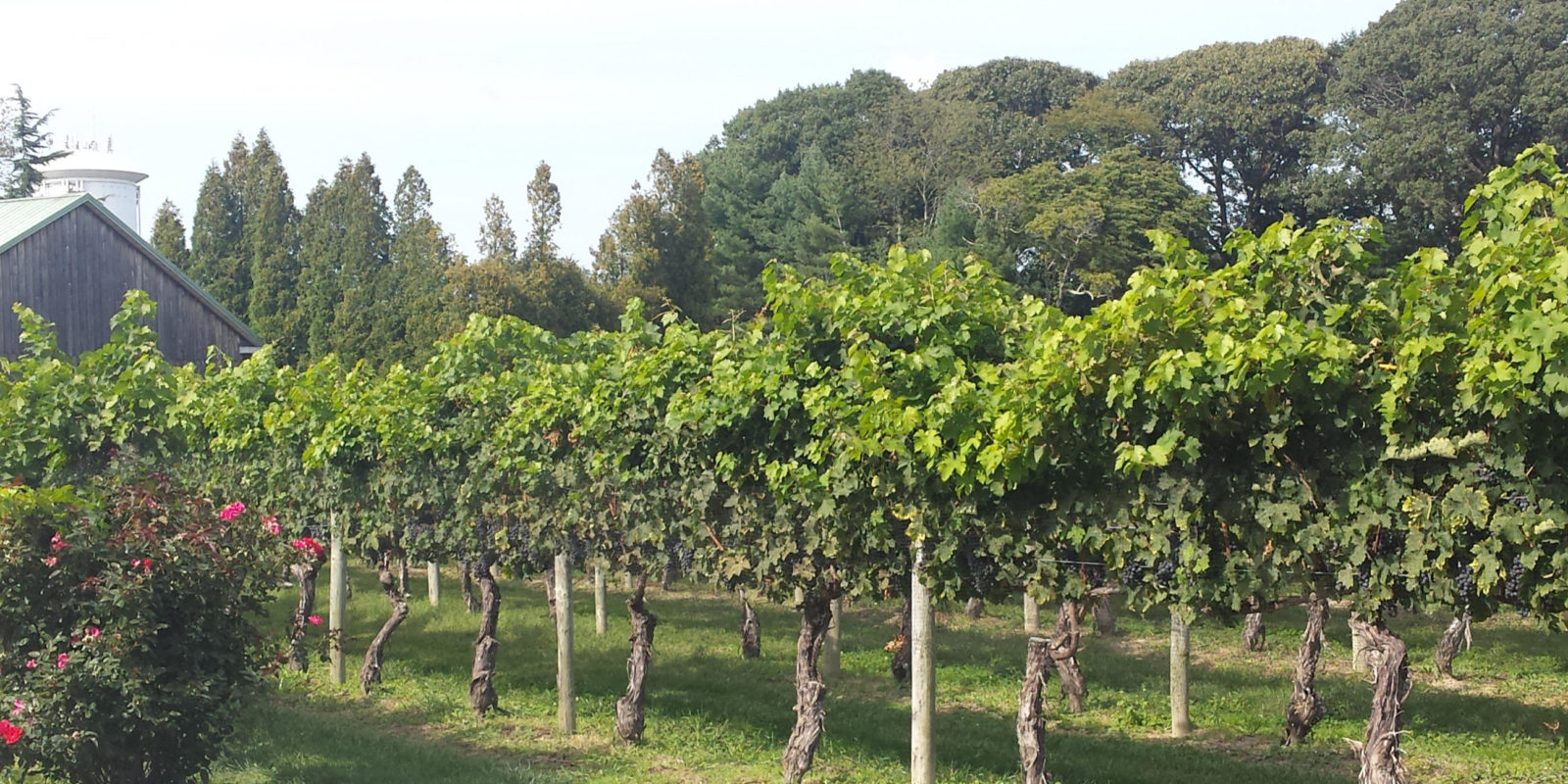
We spent the evening reviewing our route north from Cape May to Atlantic Highlands. It was only a two-hour drive, but it would take us on a 40-year trip back in time. We grew up there, met there, and began our life together there. Seeing long-time friends and old haunts would surely be a sentimental journey. Along the way, we would pass through many familiar towns such as Point Pleasant, Ocean, Deal, Asbury Park, Long Branch, Sea Bright, and Highlands, before finally reaching our hometown.
The drive showed a lot of new development along the shore, as Hurricane Sandy had decimated most of the old homes and beach clubs that once lined the oceanfront. These had been replaced by more modern construction and, seemingly, many more homes than I remembered. The seawall had been repaired and the bridge rebuilt near Highlands, along with a new entrance to Sandy Hook. Water almost surrounds the land here. There are only a few hundred yards of property between the ocean and the river, so the strong storm surge brought by Hurricane Sandy was a sobering thought. This whole area must have been underwater.
Once over the bridge, we could see Twin Lights Lighthouse on the hill. Our hometown in the upper Highlands looked the same, though the lower areas around the main street, as I later found out, were badly damaged by the hurricane. More development along the highway had removed some familiar landmarks – the orange facade of Stewart’s Root Beer stand is now a gas station, and the former Clearwater Swim Club, where Jim’s band played most summer evenings, is now a baseball field. I told myself places need to evolve, even my hometown.
We had no trouble making campground reservations in Cape May, but it was quite challenging to find any other campgrounds along the Jersey coast. That meant, after our stay in Cape May, we might have to drive into Pennsylvania or New York to find a campground! But a long-time friend, Beth, came to our rescue and invited us to stay in her home and park the RV in their driveway.
Beth and her sister, Cathy, acted as tour guides, showing us all that had changed and the precious things that had stayed the same, like the lovely old stone bridge where Jim and I often walked while courting. It remains a stately structure of brownstone with a smooth concrete arch. The massive curved staircase from the sidewalk to the top of the bridge is just as dramatic as it always was. The yacht harbor was rebuilt after Hurricane Sandy and sports a new restaurant where the bait shop used to stand. And the old Racetrack Pier, after so many years of neglect, has been refitted for ferry service to New York City.
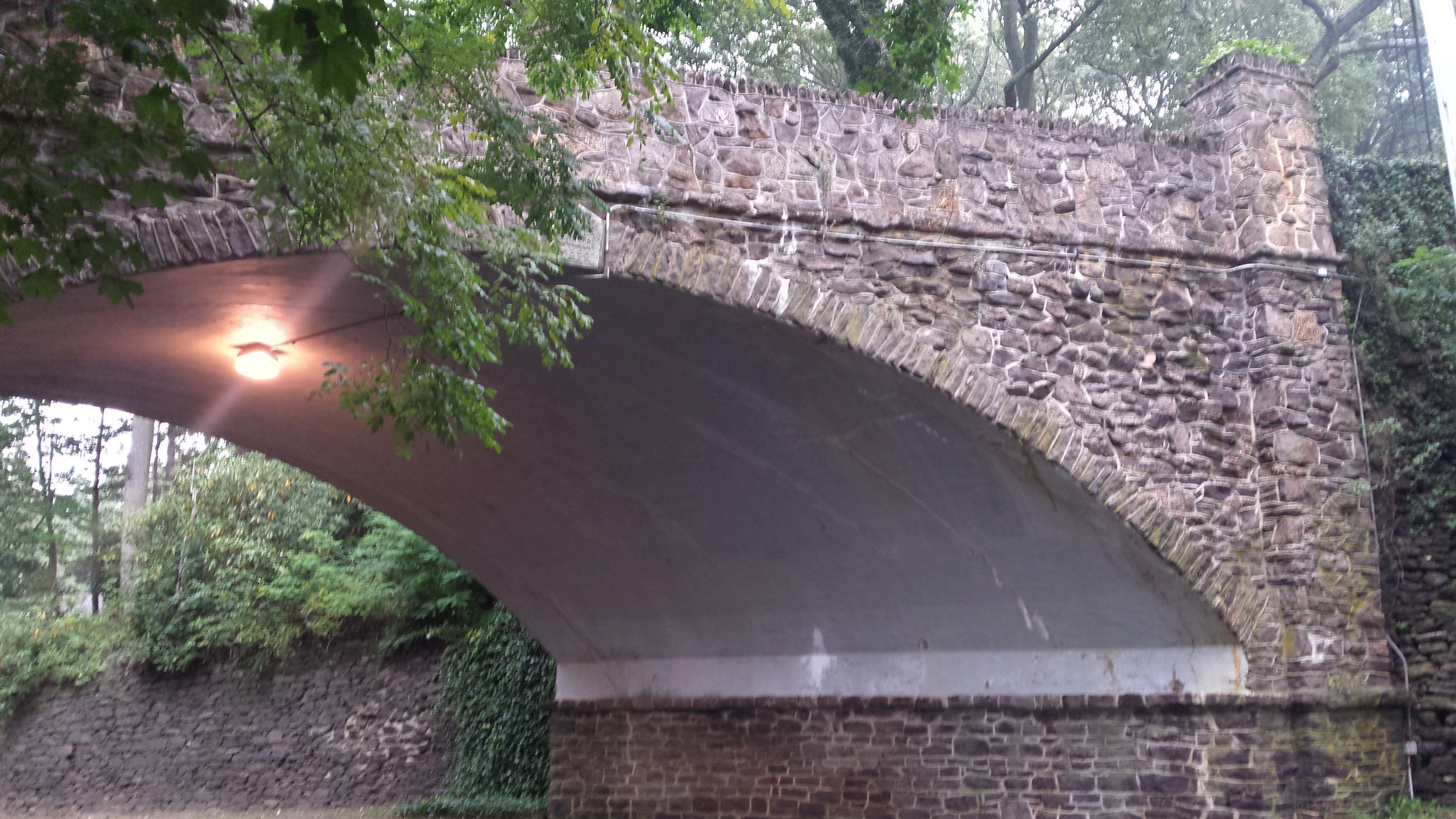
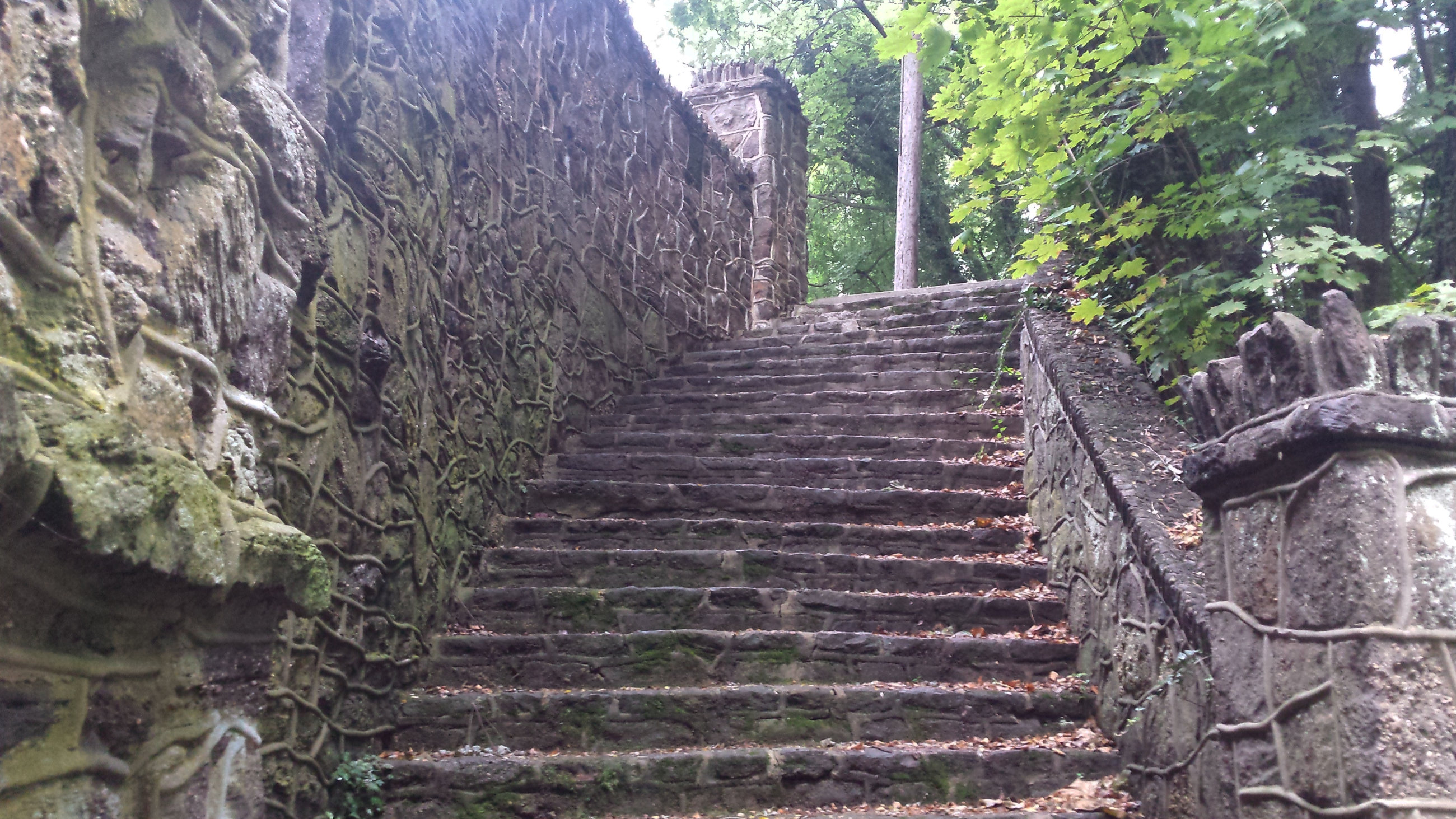
Driving out to Sandy Hook was a treat. Situated on a peninsula jutting into the Atlantic Ocean, it combines the old public beach with what was once an army base. It was always a lovely beach, but now the very tip of the peninsula, where Fort Hancock stood, is open to the public. Having decommissioned Fort Hancock, the state extended bike trails and beach access throughout the area.
There remains a Coast Guard facility and many old buildings from the fort days. Several have been turned into small museums, featuring World War II period furnishings and telling the story of how the fort guarded the coastline against foreign invasion. There is a little white chapel on the bayside where Cathy, Beth, and I sang folk mass every week for a couple of years while the fort was still in operation.
From Sandy Hook, we drove up the steep hill to the lighthouse. As we came through the woods, the Twin Light’s brownstone exterior loomed large. I don’t think we had ever ventured this close when it was still in use. We walked around the building, admiring its towers. In the museum, one of the original lights with a Fresnel lens sits on the ground, allowing visitors to admire its amazing form. A docent was touring a group, and we tagged along to learn about the lights and some of the other museum exhibits.
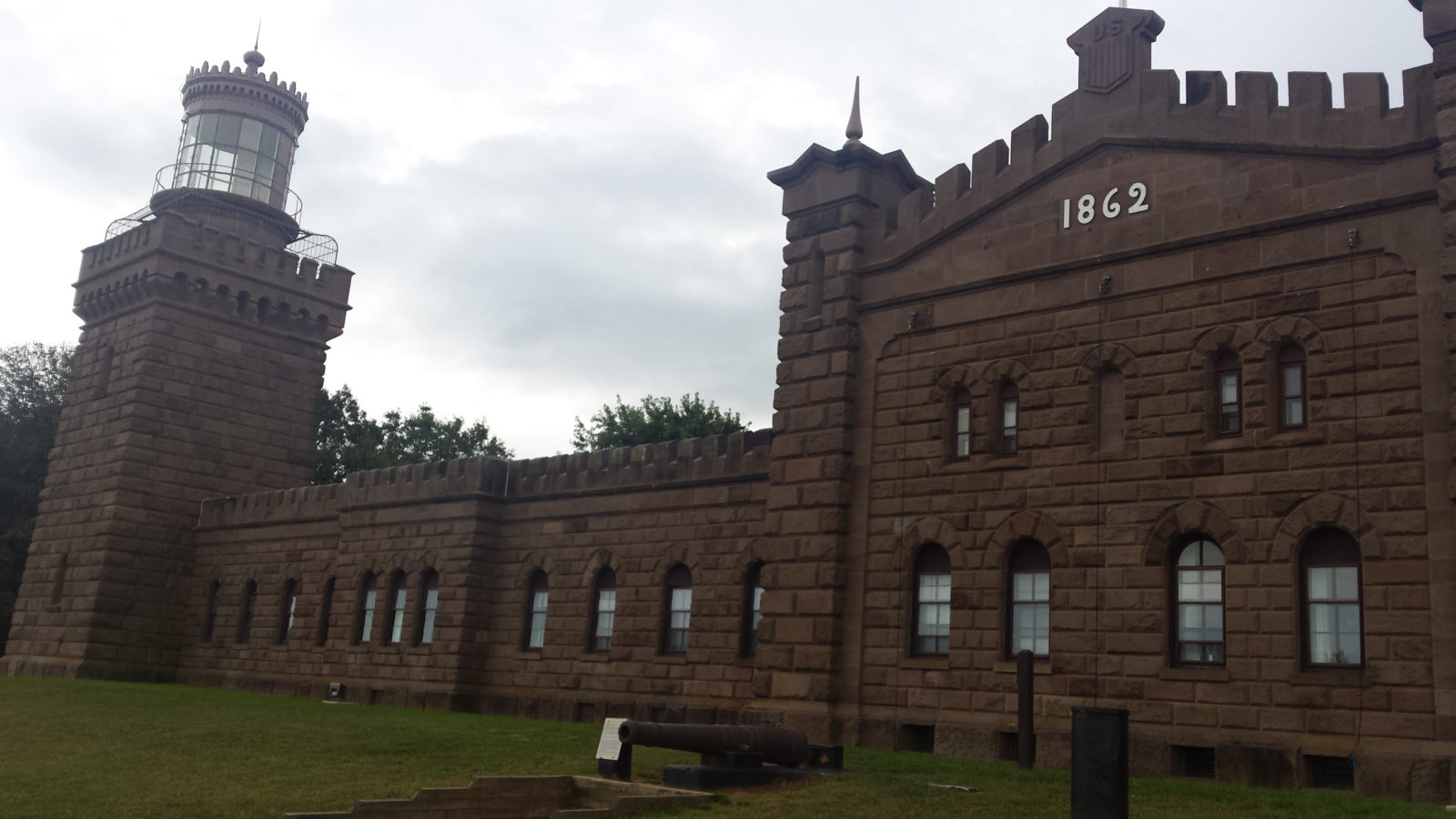
But what we really wanted to do was to climb to the light towers! As soon as we could sneak away from the tour, Jim and I looked for the tower doors. Jim pulled open the heavy wooden door and we started up the steel spiral staircase. It is quite narrow and a bit intimidating, then it shrinks to even smaller ladder-like steps near the top. I took a deep breath at the landing and then started climbing again, not daring to look down. It is only a few steps from the stair landing to the lightroom, and I pulled myself to the door and out onto the catwalk.
The view from the lightroom was spectacular. Overlooking the town, the bridge, Sandy Hook, and the Atlantic Ocean, it is a stunning location. Standing 200 feet above sea level on the Navesink Highlands, the lights provided navigation for ships along the New Jersey coast, beginning in 1862. The two lights were not identical; one was a stationary light while the other blinked, so that mariners could distinguish them from other nearby lighthouses. The lights are no longer functional, but stand proudly just the same. Our old high school’s athletic field is next to the parking lot. Who would think to build a school with a million-dollar view?! Jim commented that it was hard to pay attention to the teacher’s lectures when he could see the surf was up through the classroom windows!
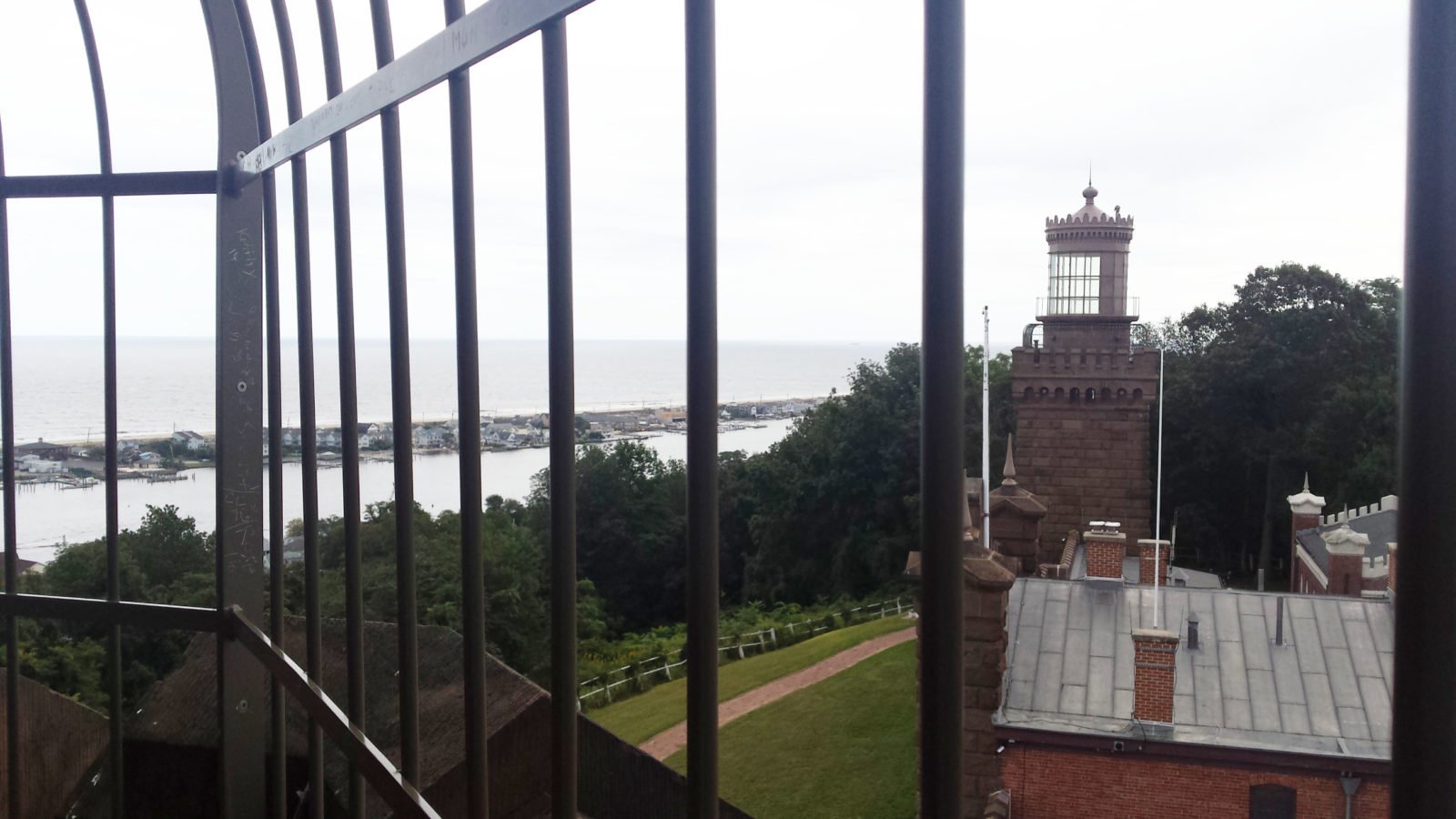
From that lofty vantage point, we knew where we should go next – to the highest point in the whole area. We wound our way up Ocean Boulevard, overlooking the bay with views all the way to Manhattan. At its highest point, Mount Mitchell, there is a park and memorial to the 911 victims who lived in this area. Walking the timeline, which surrounds a statue of an eagle, and looking beyond to the Manhattan skyline reminded me how close we lived to New York. My dad commuted there to work daily. Just like these people did.
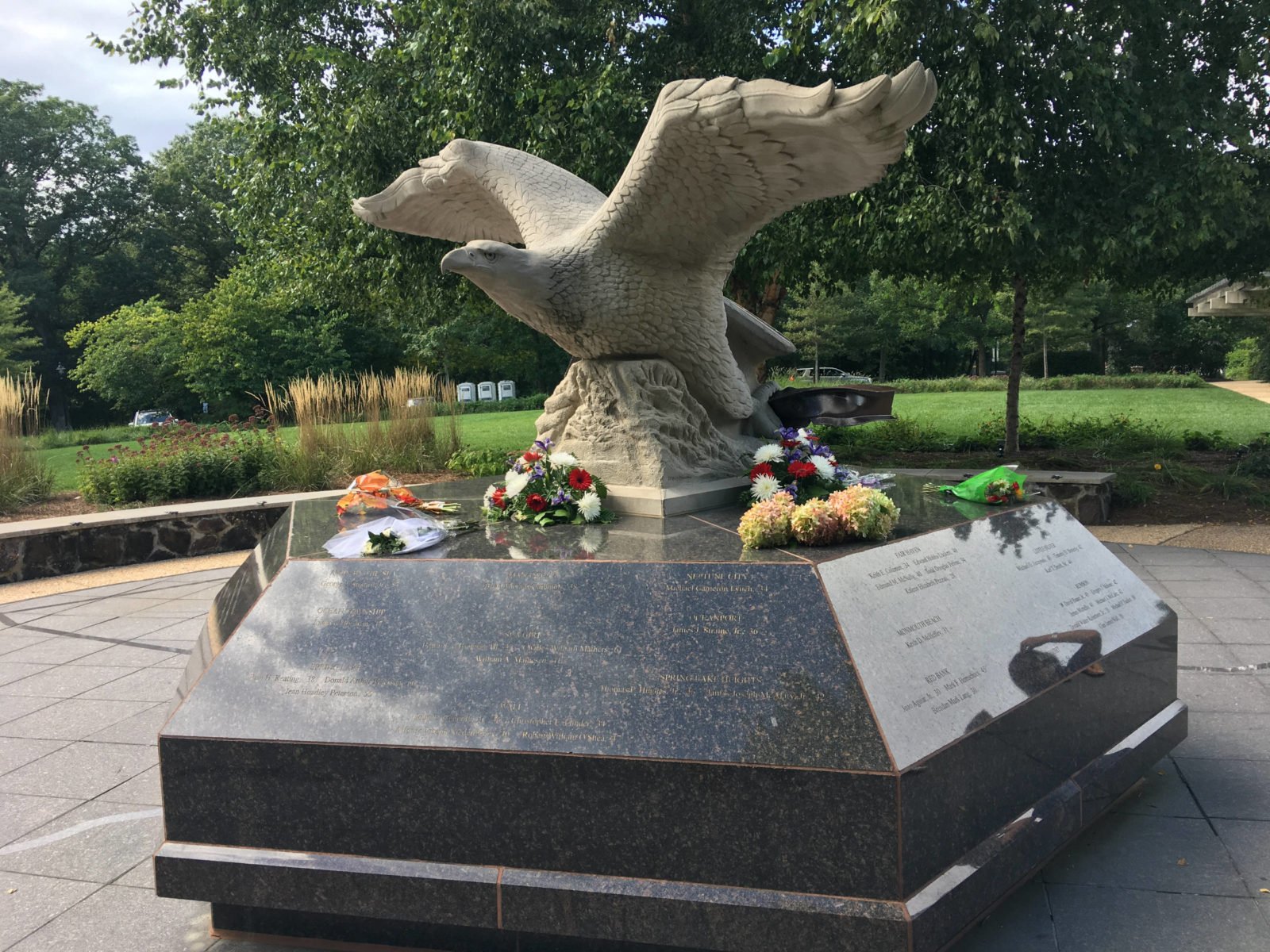
Leaving the bay behind us, we drove to nearby Navesink and Locust, towns close to the Shrewsbury River. We admired the handsome bridges and a huge park made from what used to be private property all along the river. It is now part of the county park system, replete with hiking trails, kayak access, and event spaces. I think we will have to come back ready to bike and kayak the whole area. And there is so much more to see, from yacht harbors to quaint towns.
Our time here was drawing to an end, and we wrapped up our visit with friends over dinner. The years melted away as we talked, played uke and guitar, and shared stories. Funny how good friends are always good friends, no matter how long between visits nor how far the miles between us. It makes us glad that our RV life allows us to visit family and friends all over the country.


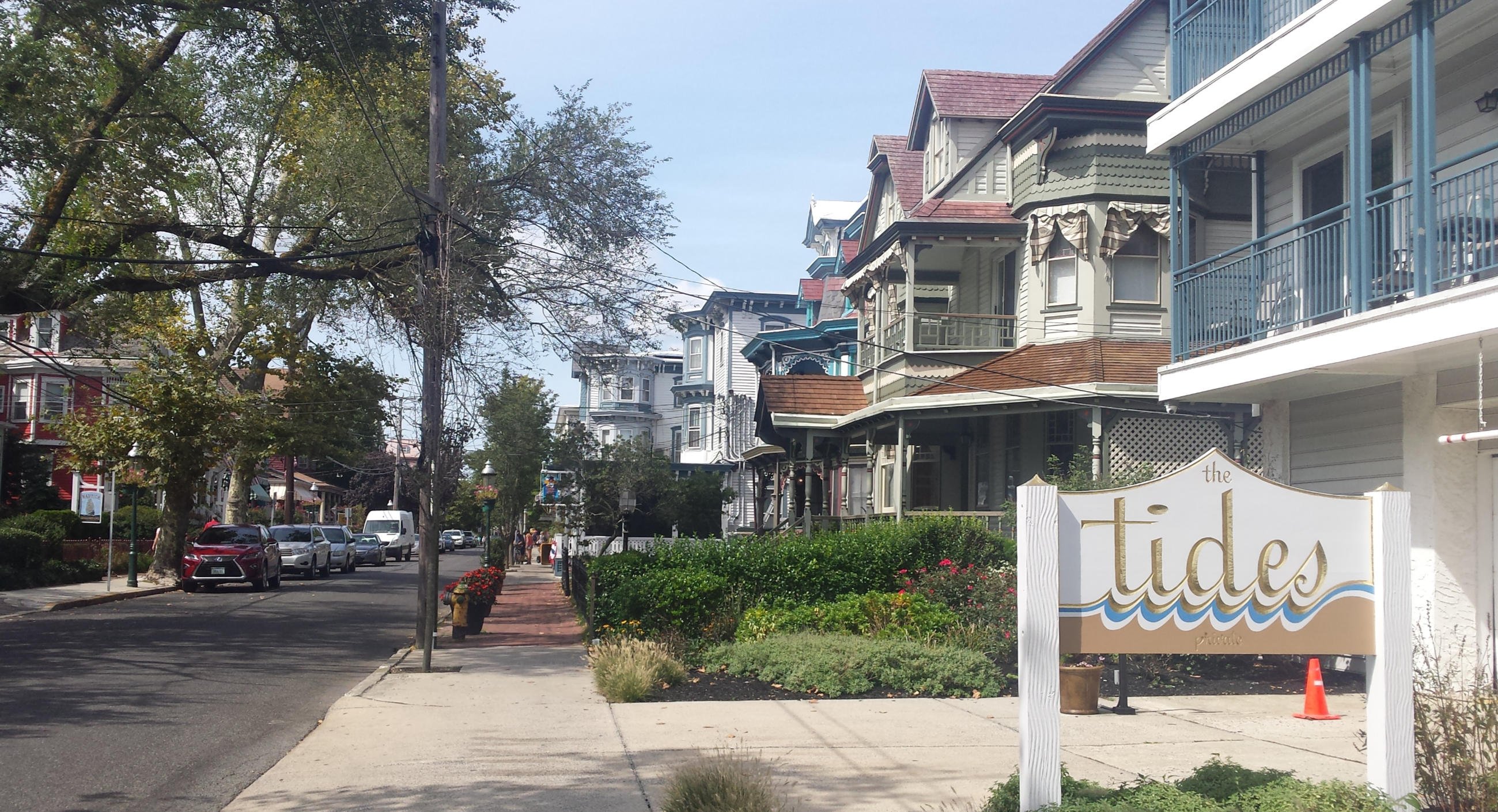


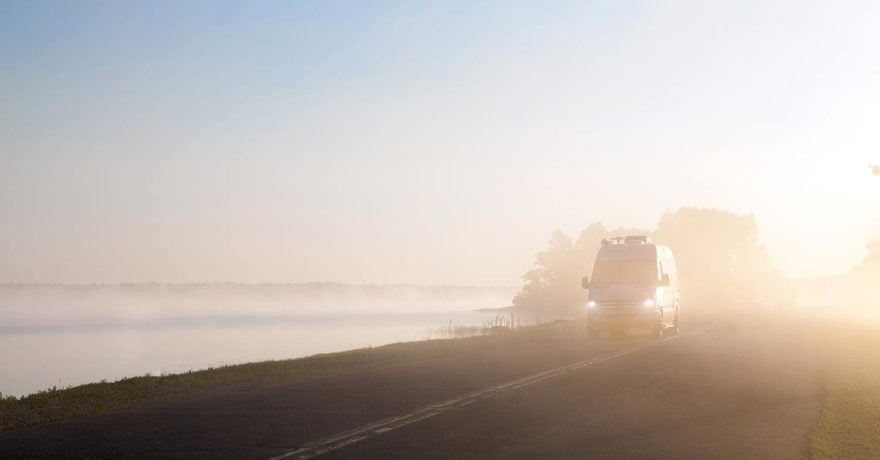
Comments